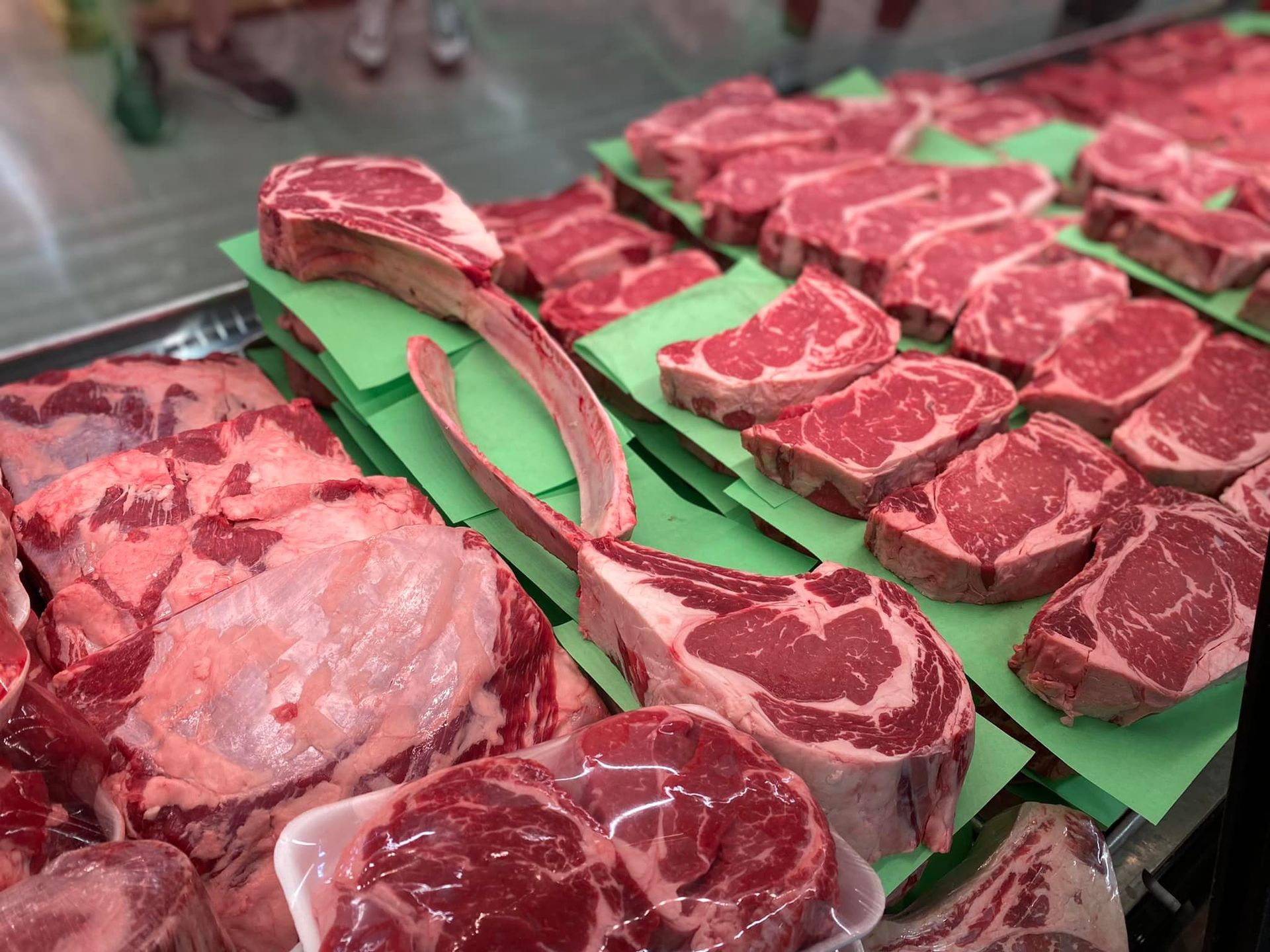What Makes Bagley Farms Meat Market Edwardsville IL Stand Out for Meat Lovers
What Makes Bagley Farms Meat Market Edwardsville IL Stand Out for Meat Lovers
Blog Article
Uncover the Art of the Butcher's Cut in a Modern Meat Market
In the ever-evolving landscape of modern meat markets, the butcher's cut has actually transcended its conventional origins, combining age-old workmanship with contemporary techniques. What really sets the modern-day butcher apart is their capability to forge a much deeper connection in between consumers and the beginnings of their meat.
Development of Butchery Techniques
The advancement of butchery methods mirrors a rich tapestry of innovation and adjustment driven by improvements in technology, modifications in consumer need, and a deeper understanding of meat scientific research. Historically, butchery was a craft gave through generations, with approaches refined over centuries to make best use of yield and taste. However, the commercial change ushered in automation, changing conventional techniques and making it possible for massive handling.
The mid-20th century saw butchery methods better refined by scientific understandings right into muscle biology and meat aging, enhancing both tenderness and preference. Technologies like vacuum packaging and refrigeration prolonged item shelf-life, permitting butchers to expand offerings and improve quality assurance. This period additionally noted the rise of specialized devices, such as band saws and meat slicers, which boosted accuracy and performance in meat handling.

The 21st century has introduced electronic modern technology right into the butchery realm. Computerized systems now aid in tracking pet provenance and optimizing cuts to meet specific customer choices. In addition, a resurgence in artisanal butchery has emerged, blending traditional skills with modern-day expertise to cater to consumers seeking ethical and sustainable meat options. This advancement emphasizes a vibrant interaction between tradition and innovation, conference modern needs while protecting the craft's heritage.
Understanding Meat Cuts
Recognizing the ins and outs of meat cuts is necessary for both butchers and consumers seeking top quality and value. Each cut originates from a different part of the pet, presenting special flavors, textures, and food preparation techniques - bagley farms meat market edwardsville il. Mastery of these distinctions not only boosts cooking experiences but likewise makes best use of the utility of each carcass. For butchers, exact cuts mirror skill and regard for the craft, ensuring marginal waste and ideal yield.

Comprehending muscle mass composition is important; muscle mass used more frequently by the pet often tend to be harder and are best fit for slow food preparation approaches, while less-used muscle mass, like those found in the loin, are more tender and ideal for cooking or roasting. Knowledge with these differences equips consumers to make informed options, enhancing their cooking undertakings.
Choosing Quality Meat
Choosing the ideal meat includes more than just selecting a visually enticing piece from the display. The art of choosing top quality meat requires a critical eye and knowledge of particular attributes that represent quality and quality.
Second of all, consider the marbling, which refers to the white streaks of fat within the muscle. Proper marbling is a vital sign of tenderness and taste, as it thaws throughout cooking, improving the meat's juiciness. Bear in mind, higher marbling typically associates with exceptional top quality cuts, such as USDA Prime.
Texture is another vital aspect; meat must really feel strong to official site the touch, not slimed or overly soft. Additionally, bear in mind the scent. Fresh meat ought to have a clean, neutral smell, complimentary from any type of sour or repulsive odors.
Combining Cuts With Cooking Techniques

Alternatively, tougher cuts like brisket and chuck roast are rich in collagen, which damages down right into gelatin when cooked gradually. These cuts are ideal for braising or sluggish roasting, permitting the meat to tenderize gradually and establish deep, intricate tastes. Similarly, cuts such as short ribs and pork shoulder get on well with slow-cooking approaches, where expanded cooking times transform their robust textures into delicious meals.
Lamb shanks and oxtail, which need long term food preparation to soften, are perfect candidates for stewing or slow simmering. These methods coax out rich, hearty flavors while preserving wetness. By comprehending the special that site features of each cut, cooks and home chefs alike can boost their cooking productions, making certain each recipe is both pleasing and remarkable.
The Butcher's Role Today
Browsing the progressing landscape of the contemporary meat market, the butcher's role today expands beyond mere prep work of cuts. Contemporary butchers are culinary craftsmens, educators, and supporters for sustainable practices. They connect the gap in between the farm and the fork by ensuring honest sourcing, recognizing pet husbandry, and prioritizing openness in the supply chain. This change shows the expanding consumer need for top quality over quantity, where provenance and animal welfare are critical.
In enhancement to crafting accurate cuts, butchers now engage directly with customers, supplying cooking advice and tailoring selections to match individual requirements and choices. Their knowledge in meat aging, marbling, and flavor profiles equips consumers to make enlightened choices, Your Domain Name enhancing their culinary experiences. This tailored service exhibits the butcher's evolving function as a trusted expert in the kitchen area.
Additionally, butchers are crucial in minimizing waste, utilizing entire pets to create diverse products such as sausages and stocks. This comprehensive strategy not only appreciates the animal yet likewise lines up with modern sustainability goals. In this method, the modern-day butcher personifies both practice and development, adjusting to an ever-changing market while protecting the creativity and honesty of their craft.
Verdict
Mastery in comprehending varied meat cuts and high quality indications empowers butchers to supply enlightened recommendations, aligning details cuts with ideal cooking methods. By honoring historic methods while welcoming modern needs, the butcher's duty remains important in today's innovative meat market.
Report this page